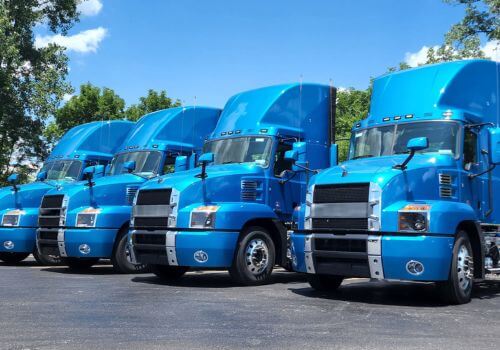In the competitive world of retail, e-commerce, and logistics, managing inventory is both a science and an art. One of the most overlooked yet costly issues in inventory management is deadstock: products that silently sit in storage, consuming valuable space, tying up cash flow, and eating into profits. Deadstock might not make daily headlines in your operations, but over time, its financial impact can be devastating.
This comprehensive guide dives deep into what deadstock is, why it matters, how to prevent it, and the strategies you can use to deal with it efficiently.
What is deadstock?
Deadstock refers to inventory that has not been sold or used over an extended period of time and is unlikely to be sold in the foreseeable future. It includes products that are obsolete, seasonal, or misjudged in terms of customer demand. These items are typically in brand-new condition but remain untouched in a warehouse or backroom storage, slowly depreciating in value.
This issue is particularly relevant for e-commerce and retail companies, where product lifecycles are getting shorter and consumer preferences shift rapidly. Deadstock can include anything from last season’s fashion apparel to discontinued electronics, expired food items, or outdated promotional merchandise.
It’s important to distinguish deadstock from other forms of unsold inventory. While slow-moving inventory may still have the potential to sell with time or promotions, deadstock is essentially considered unsellable under current market conditions unless steep discounts or other drastic measures are applied.
What are the common causes of deadstock?
Understanding why deadstock accumulates is the first step in preventing it. Most deadstock situations arise not from a single failure but from a series of small errors in forecasting, planning, and execution. Let’s examine the most common causes in detail.
Inaccurate demand forecasting
One of the primary causes of deadstock is poor forecasting. Many companies rely heavily on gut feelings, limited data, or outdated spreadsheets to predict customer demand. Without accurate sales forecasting based on historical data, market trends, and seasonality, businesses often overestimate how much of a product they’ll sell. This leads to over-purchasing and ultimately, excess inventory that doesn’t move.
Advanced demand forecasting software can analyze patterns across multiple sales channels and time periods, helping businesses make smarter purchasing decisions. Ignoring this step can result in thousands of dollars in wasted stock.
Lack of inventory visibility
When inventory data is fragmented across different systems, or not tracked in real time, it becomes difficult to identify slow-moving products before they become deadstock. Businesses without a centralized inventory management system often experience stock imbalances, such as duplicate orders or missed sales opportunities.
Real-time inventory visibility ensures businesses know what they have, where it is, and how fast it’s moving. Without it, deadstock can accumulate unnoticed.
Seasonal inventory mismanagement
Retailers and e-commerce brands often purchase seasonal goods in anticipation of major holidays or specific times of the year: Christmas, Black Friday, summer travel, back-to-school season, etc. If demand doesn’t meet expectations or products arrive too late, these seasonal items can quickly become obsolete.
Holding onto unsold seasonal inventory past its window of relevance turns it into deadstock almost instantly. Businesses that don’t have markdown or clearance strategies in place can suffer heavy losses from these miscalculations.
Rapid product obsolescence
In industries like electronics, fashion, or health supplements, product lifecycles can be very short. New trends or upgraded versions make older stock less desirable, especially if it doesn’t match evolving consumer preferences. A smartphone model that was cutting-edge six months ago may no longer appeal to customers once a newer version is released.
If your business doesn’t plan for obsolescence with lifecycle-based inventory strategies, you risk getting stuck with unsellable products before you realize it.
Inadequate marketing and merchandising
Sometimes, the problem isn’t with the product itself, but with how it’s presented. If your product listings are missing essential details, if SEO optimization is poor, or if images and descriptions don’t align with what customers want, even good products can sit unsold.
Failing to promote new items, ignoring customer reviews, and not refreshing stale product pages all contribute to inventory that doesn’t get visibility and eventually turns into deadstock.
Supplier and order errors
Another contributing factor is receiving the wrong product variant, color, size, or defective goods from suppliers. If these items can’t be returned and are not suitable for your market, they may sit unused. Businesses that don’t audit inbound shipments or enforce quality control protocols can unknowingly increase their deadstock levels.
How can businesses identify deadstock early?
The sooner you can spot potential deadstock, the better chance you have of preventing losses. These are key methods for identifying at-risk inventory:
Inventory aging reports
Use your inventory management system to run aging reports that show how long each SKU has been sitting in storage. Items aged 180 days or more, especially those with low or no sales, should raise a red flag.
Sales velocity monitoring
Track the rate at which each SKU is selling over weekly, monthly, and quarterly timeframes. Products with near-zero sales velocity for multiple cycles are likely headed toward deadstock status.
Warehouse audits and ABC analysis
Conduct regular physical inventory audits and classify your stock using the ABC method. Items in the “C” category: low-value and low-movement, should be closely watched and evaluated for write-down or liquidation.
What is the difference between deadstock and overstock?
While the terms are often used interchangeably, deadstock and overstock have key differences:
- Overstock refers to having more inventory than needed, but the items still have selling potential, especially during promotions or upcoming seasonal windows.
- Deadstock, in contrast, has little to no chance of selling without heavy discounts, repositioning, or repurposing. It’s essentially “stranded” inventory.
Understanding this distinction helps you apply the right strategies for mitigation. Overstock can often be corrected; deadstock must be cleared.
How can businesses prevent deadstock?
Preventing deadstock is about creating smarter systems and more agile operations. Here are several proven strategies to reduce deadstock risk:
Leverage predictive analytics
Use AI-driven forecasting tools that incorporate sales trends, seasonal cycles, market demand, and historical data to fine-tune your purchasing decisions. The more accurate your forecasts, the less likely you are to overstock.
Implement Just-in-Time (JIT) inventory practices
The JIT model reduces inventory bloat by ordering stock closer to the time of sale. While it requires tight supplier coordination, it minimizes storage duration and capital lockup.
Strengthen supplier relationships
Work with suppliers who offer flexible return policies, smaller MOQs (minimum order quantities), and short lead times. This allows you to test product demand without committing to large volumes.
Improve product lifecycle planning
Introduce products in stages. Begin with smaller batches, analyze performance, then scale based on data. Retire underperforming products early and plan exit strategies before the product becomes unsellable.
Maintain real-time inventory tracking
Adopt cloud-based inventory platforms that sync across warehouses, POS systems, and e-commerce channels. This visibility ensures you can react quickly to sales data and aging stock.
5 ways businesses can clear deadstock and recover value
If you already have deadstock, there are several ways to reclaim value or at least reduce the damage:
1. Deep discounts and clearance sales
Price reductions can attract bargain-hunters, especially when promoted through flash sales, email blasts, or dedicated clearance pages. Highlight the value proposition while avoiding language that suggests the product is undesirable.
2. Product bundling
Pair deadstock items with fast-selling products as value packs. Bundling helps you move inventory while improving perceived value and increasing average order value.
3. Donations and tax deductions
Donate unsold inventory to schools, shelters, or non-profits. You can often write off the value as a tax deduction while also building goodwill and reducing disposal costs.
4. Liquidation platforms
Sell excess inventory to bulk buyers or resellers through marketplaces like B-Stock, Liquidation.com, or Alibaba. You won’t recover full value, but you will free up space and capital.
5. Upcycle and repurpose
Fashion brands, for example, often turn unused textiles into new designs or collections. Highlighting the use of deadstock materials can also appeal to eco-conscious customers.
Frequently asked questions about deadstock
Q1. How long does inventory sit before it’s considered deadstock?
A1. Inventory is generally considered deadstock if it hasn’t sold or moved for 6 to 12 months, depending on the product category and sales cycle.
Q2. Is deadstock always unsellable?
A2. Not necessarily. Deadstock can often be sold through clearance sales, bundled promotions, or on secondary marketplaces; it just requires strategic effort to move it.
Q3. Can deadstock be donated or written off?
A3. Yes. Donating deadstock to qualified nonprofits can earn you tax deductions, and unsellable items may also be written off as losses during annual accounting.
Q4. What’s the best way to avoid accumulating deadstock?
A4. Accurate demand forecasting, real-time inventory tracking, and regular product performance reviews are key to preventing deadstock buildup.
Q5. Can 3PL providers help manage deadstock?
A5. Absolutely. Many third-party logistics providers offer services like aging reports, bundling, and inventory liquidation support to help reduce deadstock risk and recover value.
In summary, Deadstock refers to unsold inventory that remains in a warehouse or storage for an extended period typically due to low demand, obsolescence, or seasonality and is unlikely to be sold without significant markdowns, bundling, or alternative liquidation strategies, making it a costly burden on storage space, cash flow, and operational efficiency.







